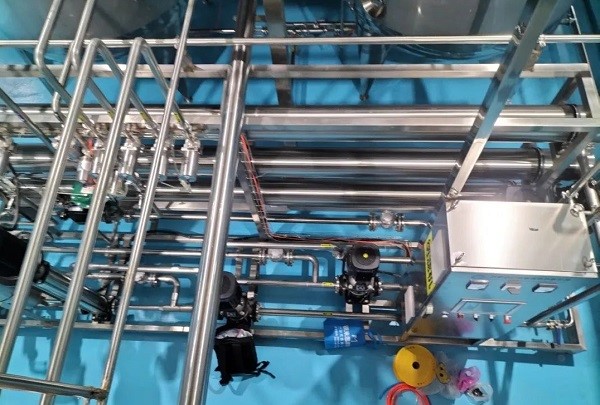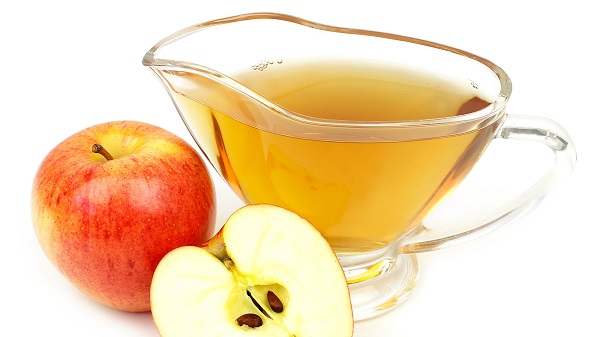Extraction Techniques And Processes Of Apple Polyphenols Powder
2024-01-30 13:57:39
Apples are rich in nutritional components and rank among the top four fruits in our country. In recent years, with the continuous expansion of apple cultivation areas and increasing apple production, apple processing has gained more and more attention. The bioactive substance in apples, apple polyphenol powder, possesses strong antioxidative, free radical scavenging, antibacterial, anti-aging, and anti-allergic functions, making it widely applied in fields such as medicine, food, tanning, and daily chemicals, playing an irreplaceable role. Moreover, as natural functional ingredient research gains momentum, apple polyphenols have become a research hotspot, and scholars both domestically and internationally have conducted research from various perspectives across different fields.

Apple polyphenols refer to a general term for substances in apples that contain multiple hydroxyl groups attached to a phenolic ring. The major classes of polyphenolic compounds in apples include hydroxycinnamic acids, flavan-3-ols, hydroxybenzoic acids, dihydrochalcones, and anthocyanins. Apple polyphenols are pale yellow-brown powders with a slight apple flavor and a hint of bitterness, soluble in water and ethanol. The composition and content of polyphenols in apples often vary significantly due to factors such as variety, ripeness, cultivation conditions, storage conditions and time, and different parts of the tissue. Comparing immature and mature apples, although their component composition is similar, there are significant differences in component content. Mature apples mainly contain chlorogenic acid, catechins, and procyanidins, while immature apples contain compounds like dihydrochalcones and quercetin.
Research Progress in Apple Polyphenol Extraction Techniques
Currently, the extraction of apple polyphenols mainly employs organic solvent extraction, which can be broadly categorized into two major types.
●Direct Organic Solvent Extraction Method
Due to the certain polarity of hydroxyl groups in the structure of apple polyphenols, solvents such as water, low-carbon alcohols, ethyl acetate, and acetone are commonly used for extraction based on the principle of similarity in solubility. Researchers like Qi Xiangyang have used ethanol water as a solvent for the extraction of procyanidins from fresh apples, achieving good extraction results. Yizhong Cai employed water and methanol as solvents to extract polyphenolic substances from 112 traditional Chinese medicinal herbs and conducted comparisons, providing a basis for phenolic substance extraction. Meng Jingyan used water with different pH values as a solvent to study the effects of different factors such as material particle size, solid-to-liquid ratio, and pH value on the efficiency of apple polyphenol extraction. Hao Shaoli and others investigated the impact of various factors on the extraction rate of polyphenolic substances from apple pomace using ethanol as the solvent, identifying optimal extraction conditions and achieving a yield of 1072.615 mg/kg.

●Organic Solvent Combined with Other Techniques
(1) Ultrasound-Assisted Extraction Method
Ultrasound-assisted extraction utilizes the strong cavitation effect, disturbance effect, mechanical vibration, high acceleration, fragmentation, and mixing effects generated by ultrasonic radiation to increase the frequency and speed of molecular movement and the penetration of solvents, thus accelerating the entry of target components into the solvent. This technique enhances the extraction of plant's effective ingredients through a physical fragmentation process. The specific process involves apple pomace → ultrasound-assisted organic solvent extraction → vacuum concentration → drying.
(2) Membrane Separation Technology, as an efficient, economical, and environmentally friendly method, has been widely applied in the extraction of apple polyphenols, offering the following advantages:
01. Efficiency: Membrane separation technology efficiently extracts apple polyphenols through appropriate membrane materials and separation processes. Compared to traditional extraction methods, membrane separation technology operates at lower temperatures and pressures, reducing energy consumption and production costs. Additionally, membrane separation technology has high separation efficiency and selectivity, effectively separating apple polyphenols from other impurities and increasing product purity.
02 . Simplicity: Membrane separation technology is simpler and more feasible compared to traditional extraction methods. The membrane separation process does not require complex chemical reagents or intricate operational steps. With suitable membrane materials and proper operating conditions, effective separation and extraction of apple polyphenols can be achieved. This not only enhances work efficiency but also reduces the possibility of operational errors, minimizing the impact of human factors on product quality.
03 . Controllability: Membrane separation technology allows for precise control of the apple polyphenol extraction process by adjusting operating conditions as needed. Parameters such as membrane pore size, membrane surface properties, temperature, and pressure can be modified to achieve optimal separation and extraction efficiency. This controllability enables membrane separation technology to adapt to different production scales and requirements, offering personalized solutions.
04. Environmental Friendliness: Membrane separation technology is a green and environmentally friendly separation method. Compared to traditional chemical or thermal methods, membrane separation technology generates less waste in the extraction process, reducing environmental pollution. Additionally, membrane separation technology can recycle organic solvents used in the extraction process, minimizing resource wastage.
What Are Apple Polyphenols?
Apple polyphenol powder (Apple Polyphenols, AP) are secondary metabolites produced during the growth of apples. They are brown-red powder substances, and a 20% water solution appears reddish-brown, while 100% powder is yellow-brown. Both liquid and powder forms have a slight apple flavor with a hint of bitterness, and they are soluble in water and ethanol with good stability.
The content of apple polyphenols varies with ripeness; the polyphenol content in unripe fruit is ten times that of ripe fruit. Therefore, it is advisable to extract apple polyphenols from unripe fruit. Generally, apple polyphenols are derived from 100% unripe green apples and are extracted through processes such as crushing, juicing, enzymatic hydrolysis, ultrafiltration, adsorption, and drying.
Benefits and Applications of Apple Polyphenols
Procyanidins (OPC) are internationally recognized natural antioxidants that effectively eliminate free radicals in the body. Their antioxidant capacity is 50 times that of vitamin E and 20 times that of vitamin C. Apple, polyphenols contain up to 60% procyanidins, with 70% being low molecular weight procyanidins, making their antioxidant activity stronger than that of tea polyphenols and grape polyphenols. Additionally, apple polyphenols have various physiological functions such as preventing obesity, reducing cholesterol, lowering blood lipids, anti-allergy, cardiovascular protection, whitening, and sun protection.
Apple polyphenol extracts contribute to lowering cholesterol. Apple polyphenols are a collective term for the polyphenolic substances present in apples. They include chlorogenic acid, catechins, epicatechins, apple condensed tannins, phloridzin, phloretin, anthocyanins, and other components.

Take a look at their effects:
Apple polyphenols possess antioxidant, deodorizing, preservative, color protection, and prevention of vitamin loss functions, which can prevent food quality deterioration. Therefore, they can be used in the processing and manufacturing of aquatic products, meat products, bread, pastries, oils, oil-containing foods, and refreshing beverages, significantly improving product quality and shelf life.
Apple polyphenols have various health-promoting functions, such as preventing tooth decay, hypertension, allergic reactions, and UV absorption inhibition. Therefore, they can be used in the manufacturing of health foods and cosmetics.
As an additive in health and functional foods, only 50-100mg of apple polyphenols are needed to achieve full effectiveness.
Recently, a new study conducted by the Second University of Naples revealed that apple polyphenol extracts can increase the excretion of cholesterol by 35% in healthy individuals.
Researchers discovered in vitro experiments that apple extracts reduce the micelle solubility of cholesterol by 86%.
In a subsequent randomized, double-blind, placebo-controlled crossover study, 50 healthy males and females consumed a high-cholesterol diet for 10 consecutive days, with some diets containing apple extracts and others not. This was followed by a 7-day "washout" period before crossing over to the other group.
The results showed that compared to the placebo, apple polyphenol extracts increased cholesterol excretion in feces by approximately 35%. When evaluating the potential bioactive components of apple polyphenol extracts, researchers noted that nuclear magnetic resonance data indicated that dimeric procyanidins could interact with phosphatidylcholine (PC) and bile acid micelles, leading to cholesterol precipitation.
Clinical data suggests that when healthy subjects consume a high-cholesterol diet, apple polyphenol extracts increase cholesterol excretion in feces. The current study suggests that apple polyphenol powder could be an effective medication for reducing cholesterol absorption in healthy individuals.
For related products, please visit our website:www.sxytorganic.com
Contact Us For More Details>>
E-mail:sales@sxytorganic.com
Tel: +86-029-86478251
_1737093401309.png)
